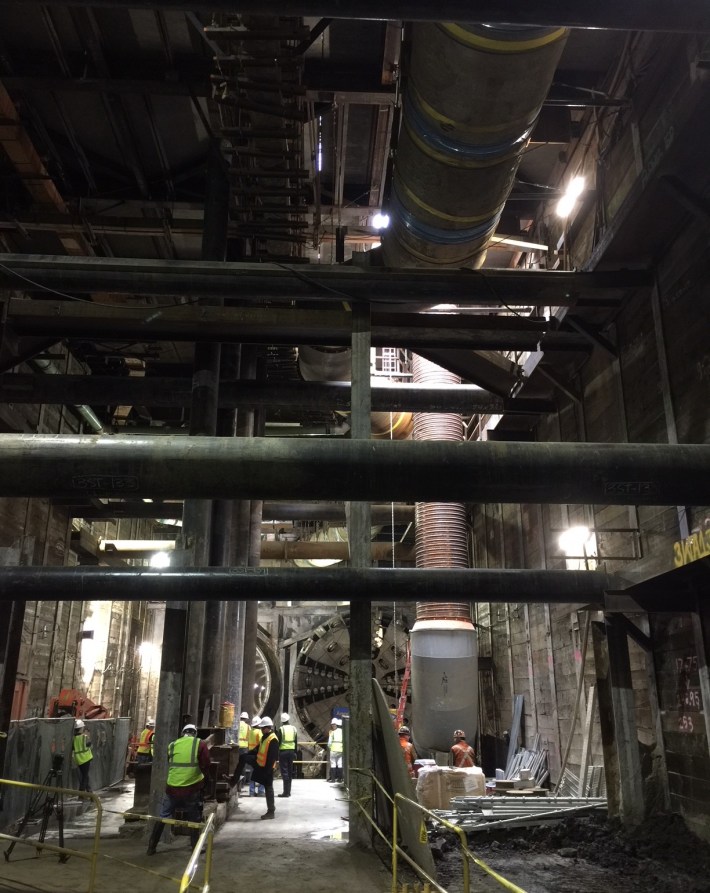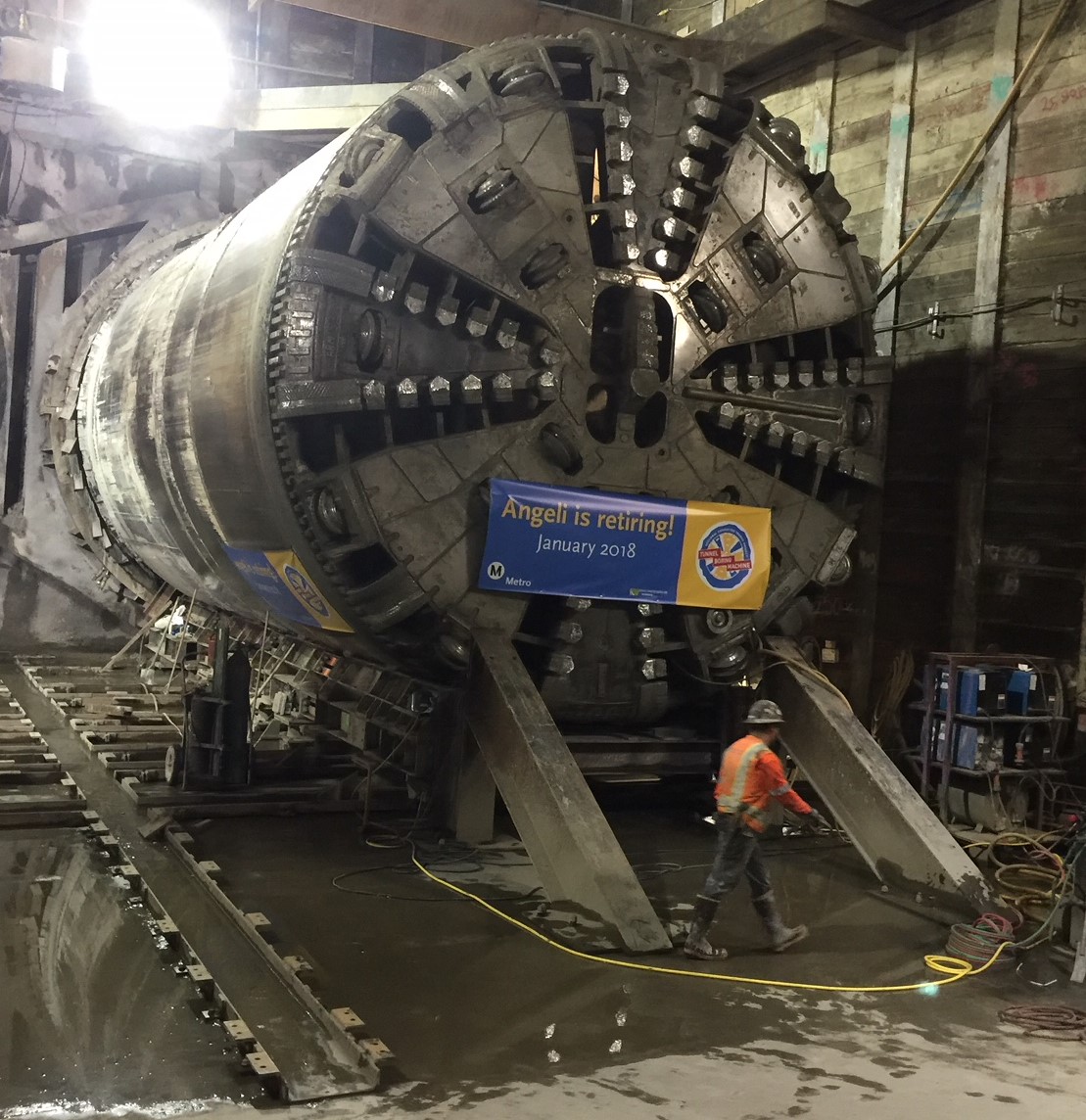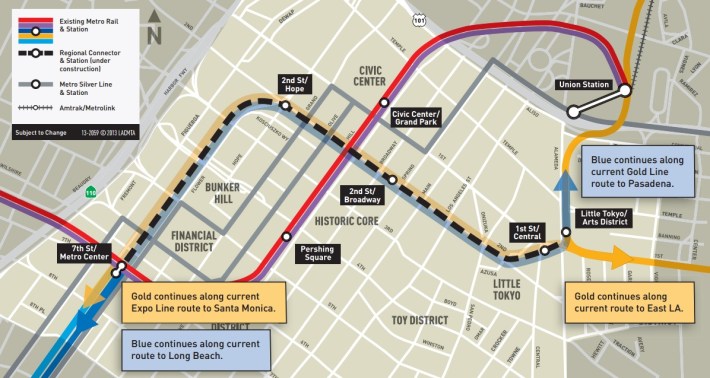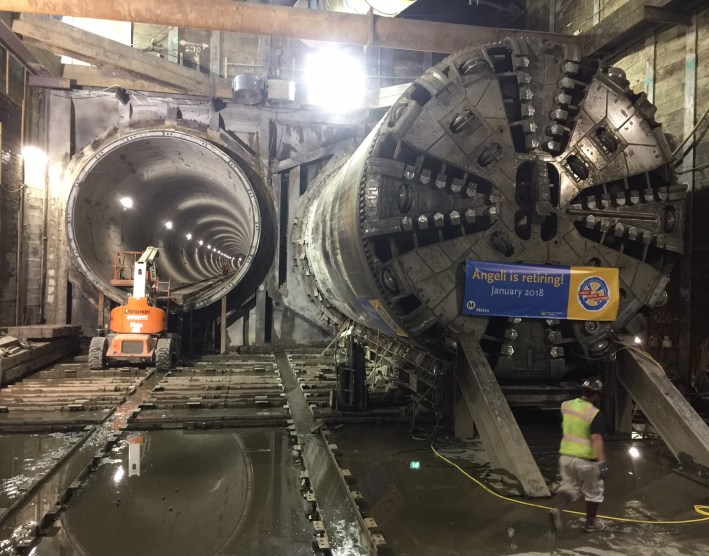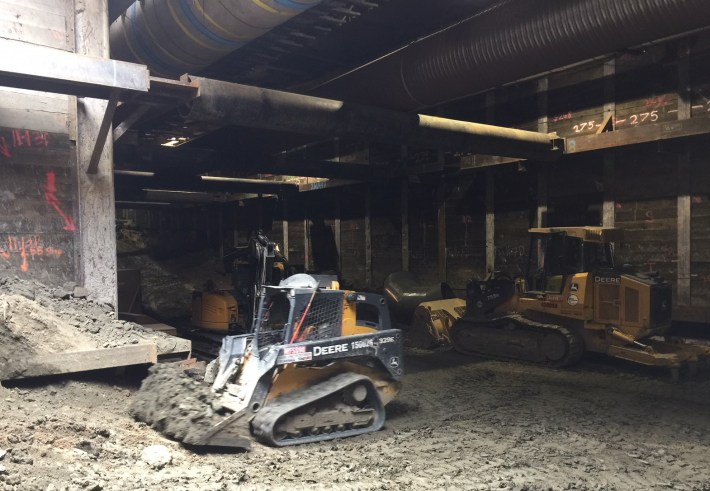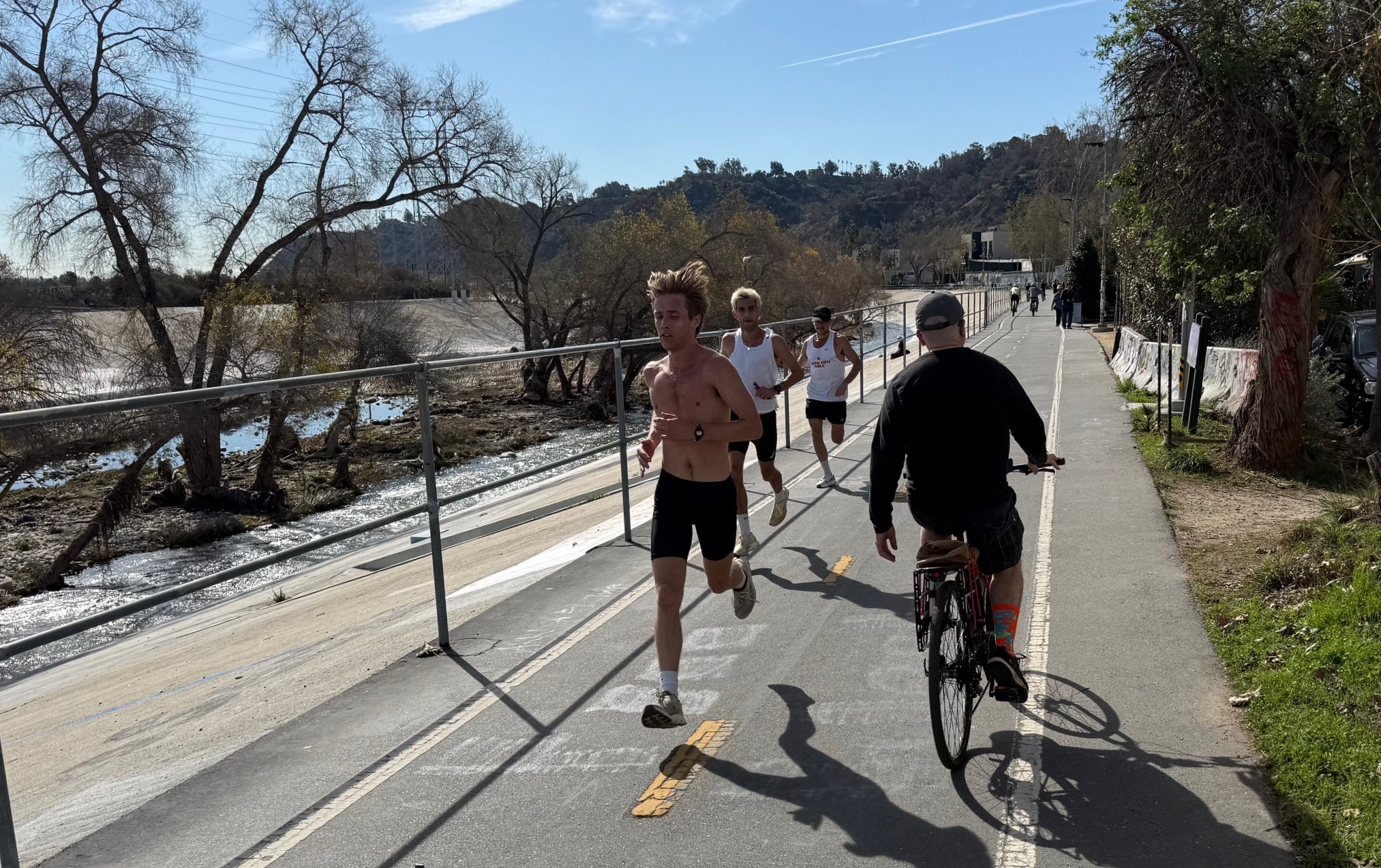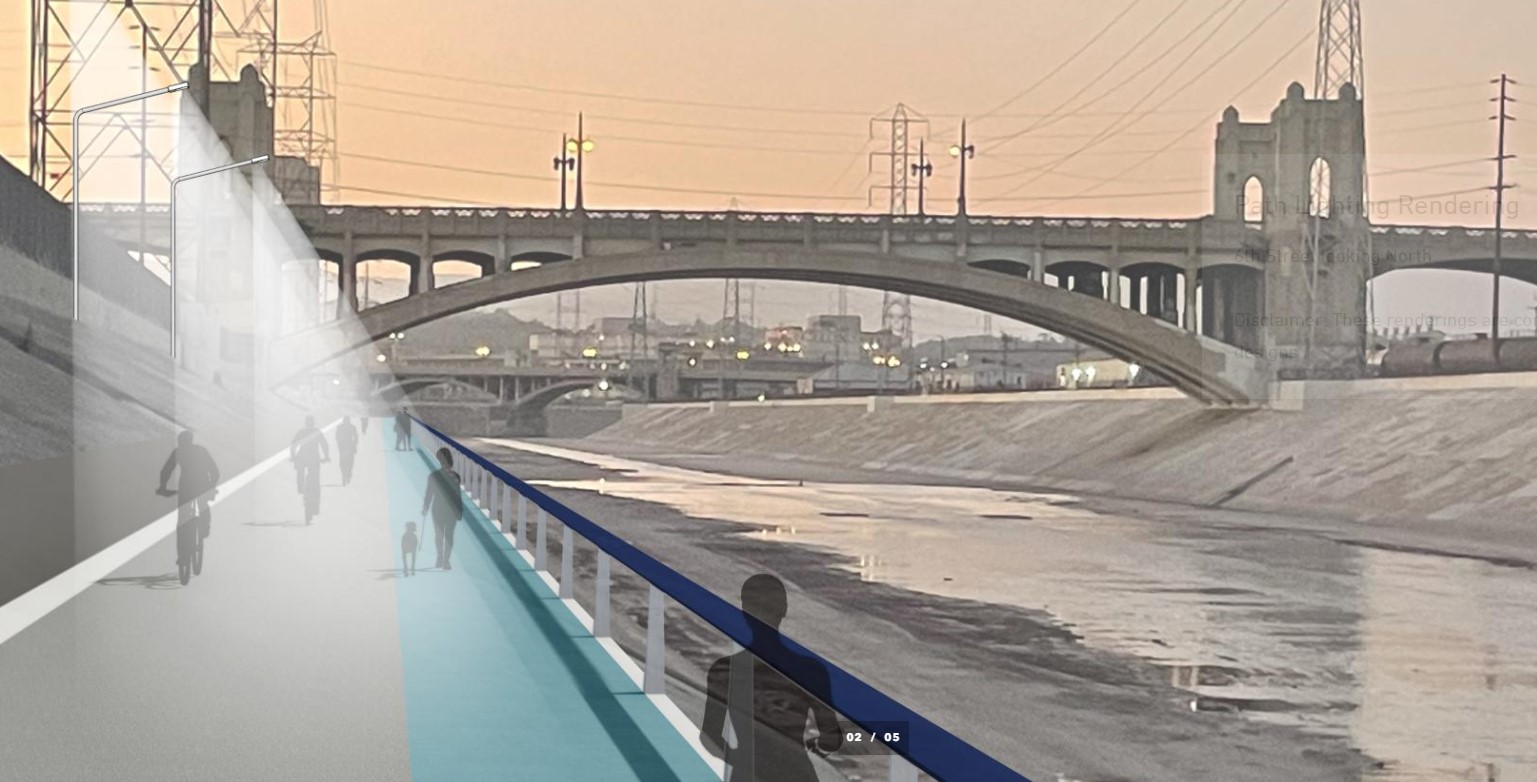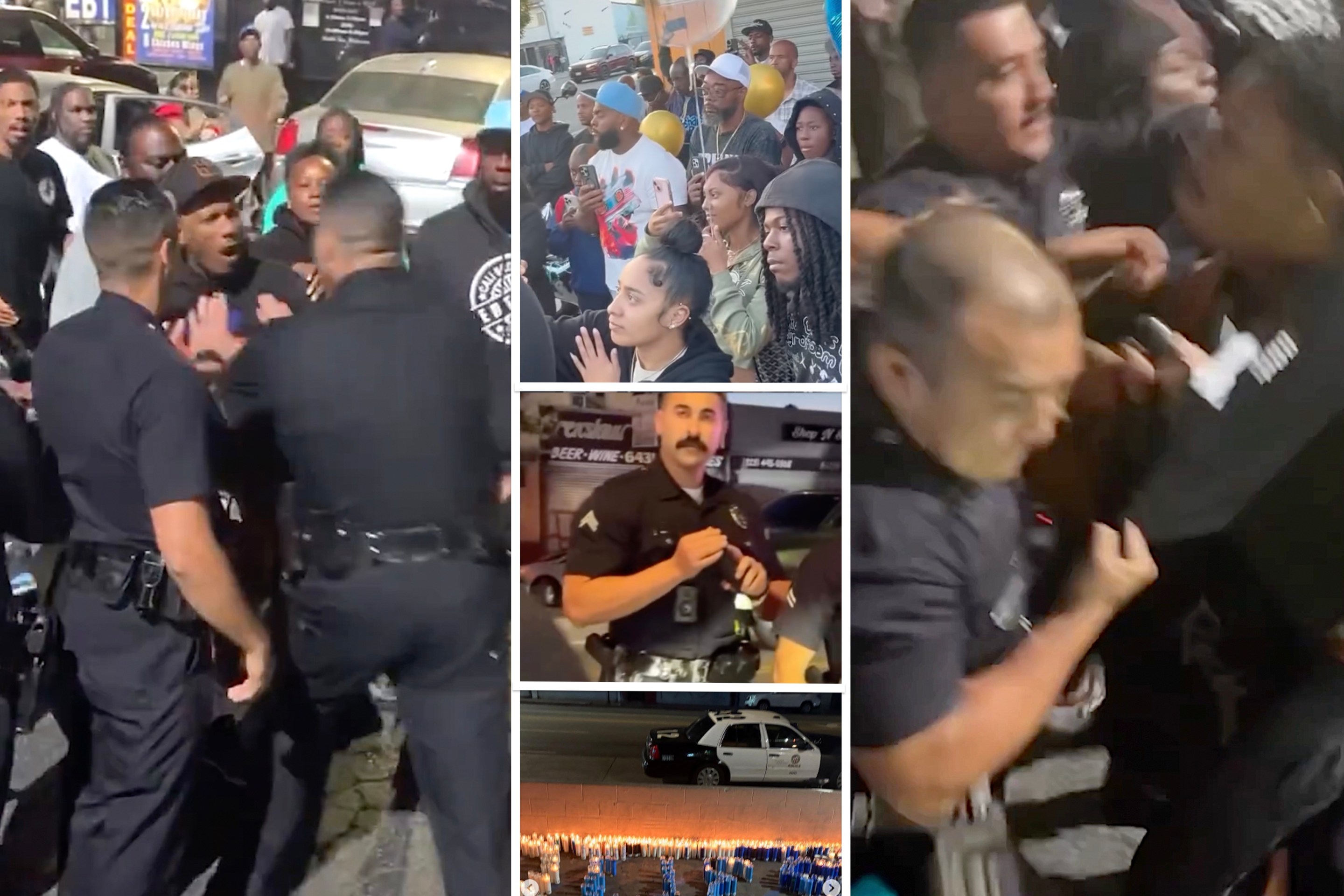This morning, Metro held a retirement ceremony to celebrate the work performed by "Angeli" the Tunnel Boring Machine for Metro's Regional Connector subway project. The Regional Connector is a 1.9-mile light rail subway that will connect the Blue, Expo, and Gold Lines. The project is now nearly half done and expected to be completed in late 2021.
In late 2016, Angeli was lowered into the ground at a construction site at the corner of First and Alameda Streets in Little Tokyo. The TBM proceeded to dig west below Second Street, then turned south under Flower Street. In June, the machine broke through at the future Grand Avenue Station below Bunker Hill. In July, the TBM was extracted and returned to Little Tokyo to bore a second parallel subway tunnel.
Earlier this week, the TBM broke through at a below-ground construction site located on Flower Street between Third and Fourth Streets in downtown Los Angeles. In digging the two roughly mile-long subway tunnels, Metro reports that Angeli extracted 240,000 tons of earth.
To connect from the extraction pit at 4th Street to the 7th Street Station, the final three blocks of subway tunnels will be built via cut-and-cover surface construction.
Over the next eleven weekends, this stretch of Flower will be closed to traffic, so the TBM can be disassembled and extracted.
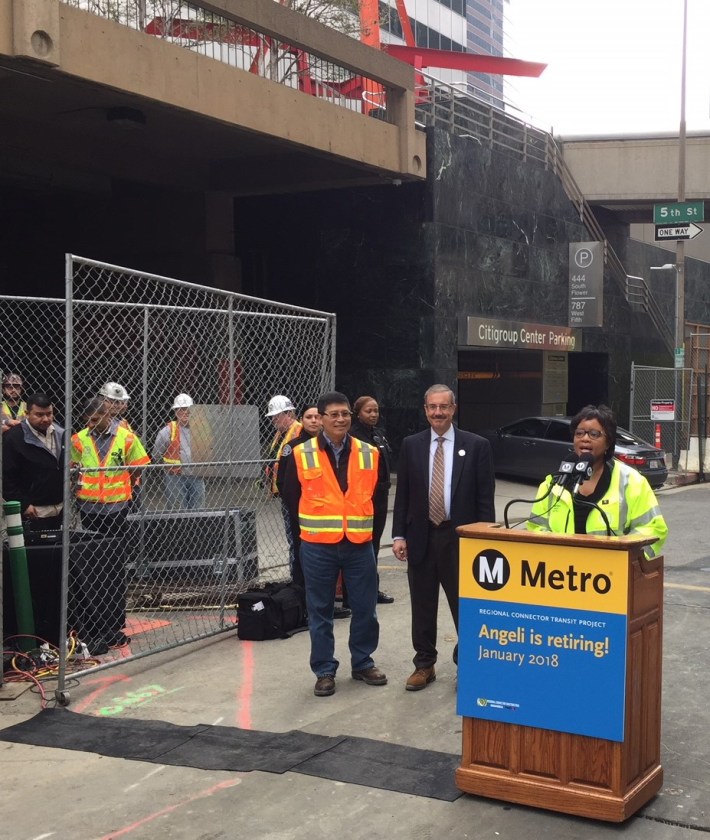
As Metro project manager Gary Baker alluded to in today's ceremony, Angeli's journey included overcoming some serious obstacles. The subway is going below some of the oldest streets in Los Angeles; from early on it has had to deal with unanticipated and sometimes aged utility infrastructure.
Last fall, about 80 feet under Second Street, between Spring and Main Streets (next to LAPD headquarters), the TBM struck steel piles. Angeli managed to chew through the piles, but at some cost. The piles damaged the machine's teeth and cutter wheels, and broke the TBM's screw conveyor, necessitating a ~$1 million replacement. Construction crews were able to make make immediate repairs and get the TBM back in service, but moving more slowly. Baker related that the TBM was fortunate not to get stuck, as happened in Seattle. The L.A. Times reported that the incident resulted in a month delay and ultimately cost between $5 million and $7 million.
Baker mentioned that the TBM continued to encounter obstacles below Flower Street, where it went through several steel "tie-back" rods. All in all, Baker estimates that Angeli made its way through about 500 pounds of steel, none of which was supposed to be there.
Overcoming these obstacles to keep the project on track has meant some budget increases. When the Regional Connector broke ground in 2014, it was expected to cost $1.42 billion. In 2015, "unforeseen discoveries" drove the price up to $1.55 billion. This year the budget was revised upwards to $1.75 billion.
